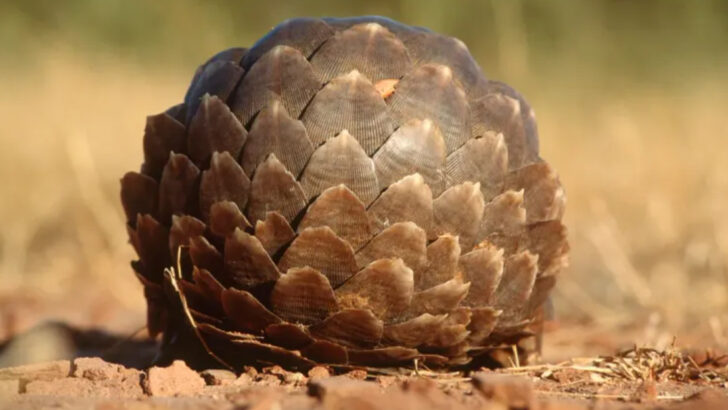Pangolins are fascinating creatures that captivate the imagination with their unique features and behaviors.
Known for their protective scales and elusive nature, these animals are unlike any other.
In this article, we will explore 11 peculiar facts about pangolins that highlight their distinctiveness in the animal kingdom.
From their dietary preferences to their remarkable defense mechanisms, pangolins offer a treasure trove of surprises.
Join us as we delve into the world of these intriguing creatures and discover what makes them truly extraordinary.
Pangolin Scales
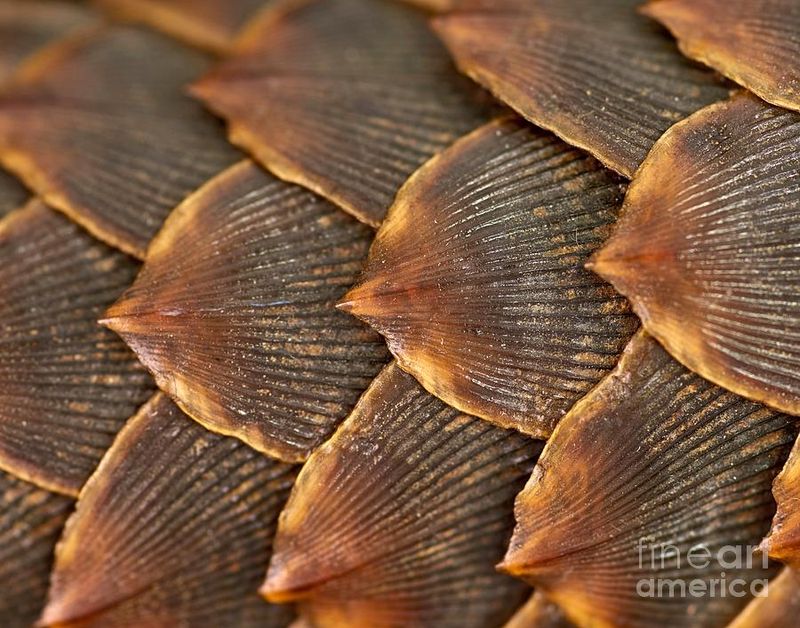
Covered in tough, overlapping scales, pangolins are often described as modern-day armored knights. These scales, composed of keratin, are not just for show.
They serve as a formidable defense mechanism against predators. When threatened, a pangolin can curl into a tight ball, making its scales an impenetrable shield. In some cultures, these scales are valued for their supposed medicinal properties, although this has led to their illegal poaching.
Interestingly, the scales continue to grow throughout the pangolin’s life, continuously shedding and regenerating, much like human fingernails.
Nocturnal Lifestyle
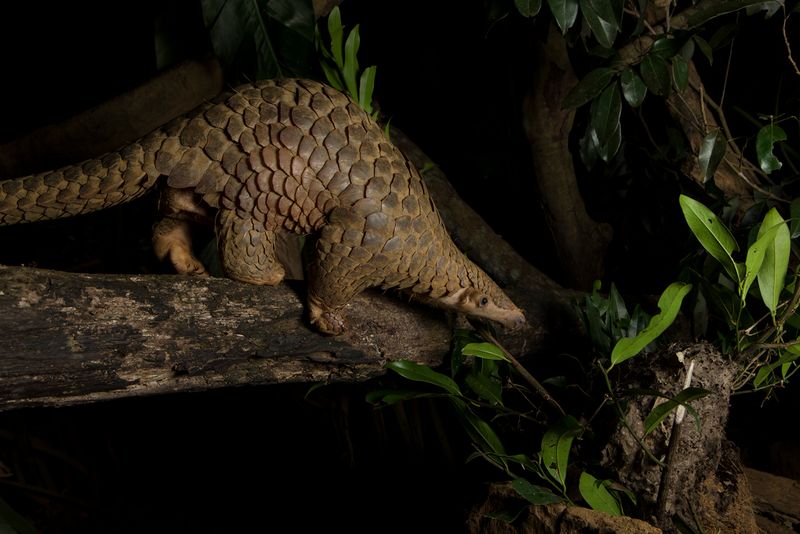
Pangolins are nocturnal creatures, preferring the cool embrace of the night to the hustle and bustle of the day. Their night-time activities include foraging for food and avoiding predators.
Equipped with an acute sense of smell, pangolins can locate insects even in the dark. This nocturnal lifestyle not only aids in their survival but also in maintaining their mysterious aura.
As night owls, they are rarely seen by humans, which adds to their enigmatic reputation. The moonlit savannah becomes their playground, revealing their secretive world.
Tongue Length
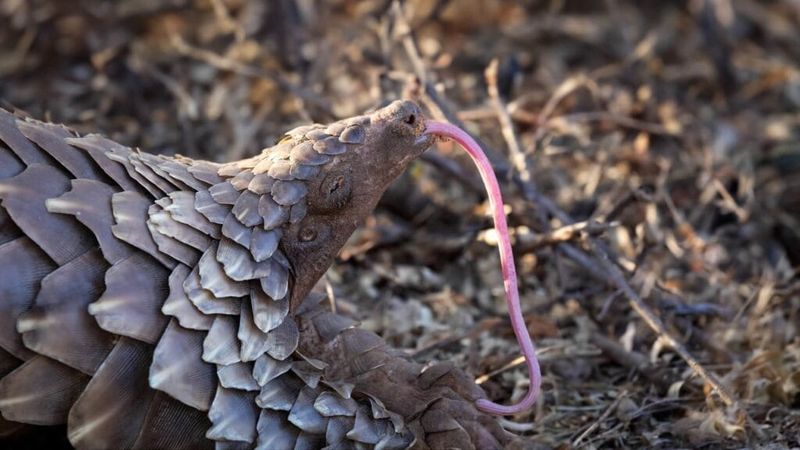
A pangolin’s tongue is a wonder in itself. Surprisingly long, it can extend over 16 inches, far surpassing the length of their head and body combined.
This remarkable feature enables them to reach deep into ant nests and termite mounds, their primary food sources. Stored in a special cavity within their chest, the tongue’s length and flexibility allow pangolins to feast efficiently.
This extraordinary adaptation makes pangolins expert insectivores, able to consume thousands of ants and termites in one meal. Their tongue’s prowess is truly a marvel.
Unique Defense Curl
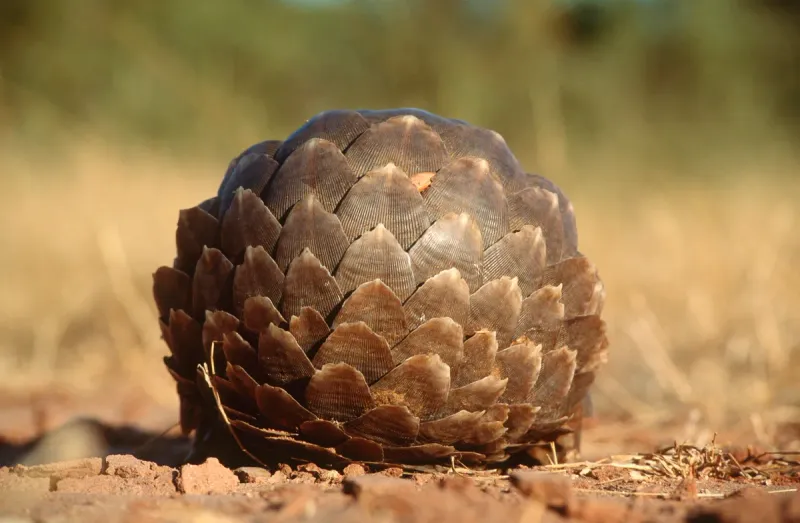
The pangolin’s ability to curl into a ball is not just an endearing trait but a vital defense strategy. When faced with danger, they roll up, tucking their head under their tail, creating a nearly impenetrable shield with their scales.
This defensive posture protects them from predators like big cats. The sight of a curled pangolin is akin to a living fort, showcasing nature’s ingenuity. This behavior is so effective that even large predators find it challenging to break through their armor. It’s a testament to their evolutionary success.
Dietary Specialization
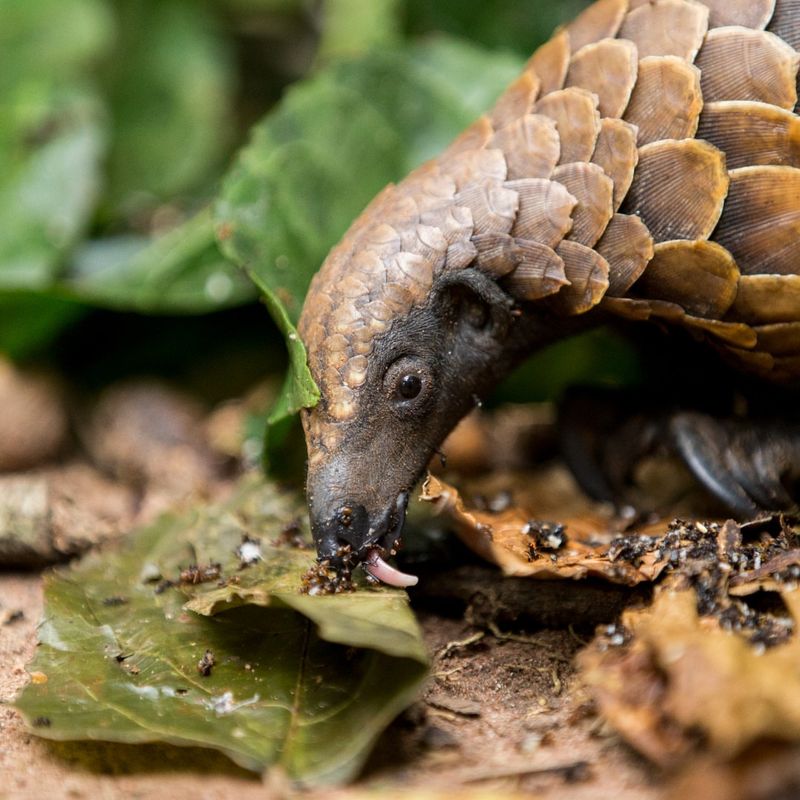
Pangolins are specialized feeders, relying almost exclusively on ants and termites for nourishment. Their diet is not only specific but also surprisingly voluminous.
A single pangolin can consume up to 70 million insects annually. Their strong, curved claws are perfect tools for breaking into insect nests, and their sticky saliva ensures they capture every meal. This dietary specialization is a double-edged sword, making them vulnerable to changes in insect populations.
Yet, it also highlights their unique ecological niche, showcasing their role in controlling insect populations.
Burrowing Habits
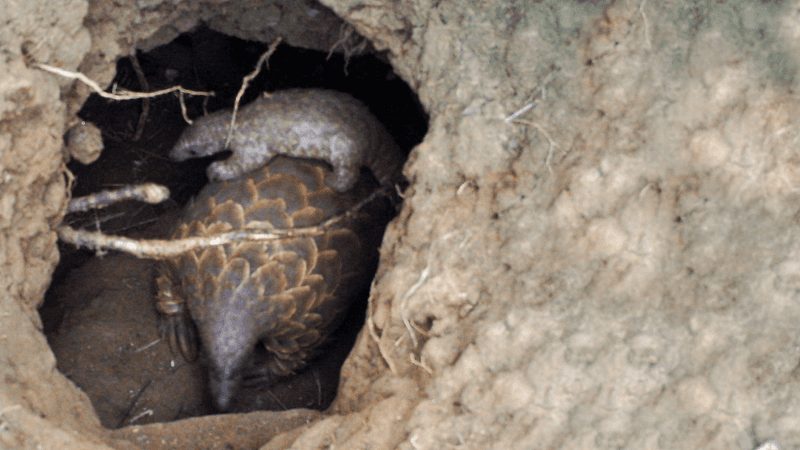
Pangolins are excellent diggers, using their powerful forelimbs to create burrows that serve as homes and hiding spots. These burrows can be quite elaborate, providing shelter from predators and harsh weather.
The act of digging contributes to soil aeration, benefiting the ecosystem. Within these subterranean sanctuaries, pangolins find respite and raise their young. Their burrowing habits highlight their adaptability and resourcefulness.
Interestingly, these burrows are sometimes used by other animals, showcasing the pangolin’s inadvertent role as an ecological engineer.
Solitary Nature
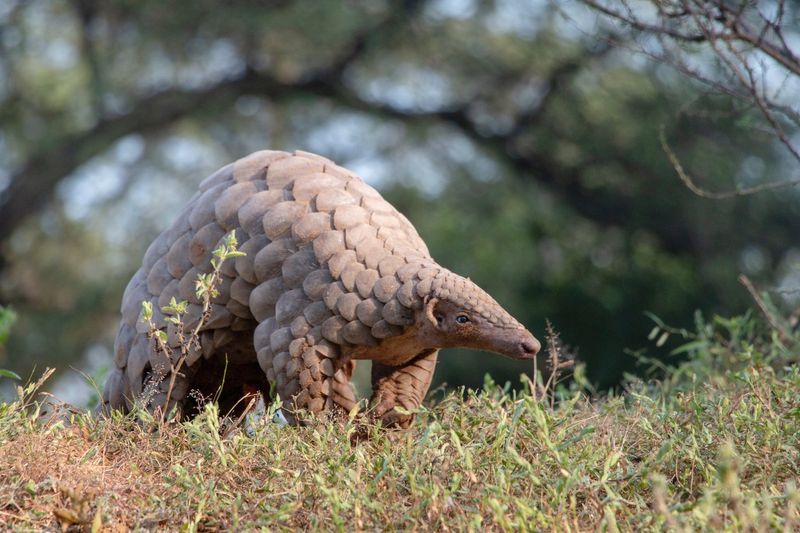
Pangolins lead solitary lives, coming together only for mating purposes. This reclusive behavior is part of their charm, adding to their mystique.
Each pangolin maintains a large territory, marked with scent from their anal glands. Their solitary existence reduces competition for food and mates, allowing them to thrive in their environment. While they may seem lonely, this lifestyle suits them perfectly.
The forest becomes their personal domain, a vast space where they roam in peace. Their solitary nature emphasizes their independence.
Motherly Care
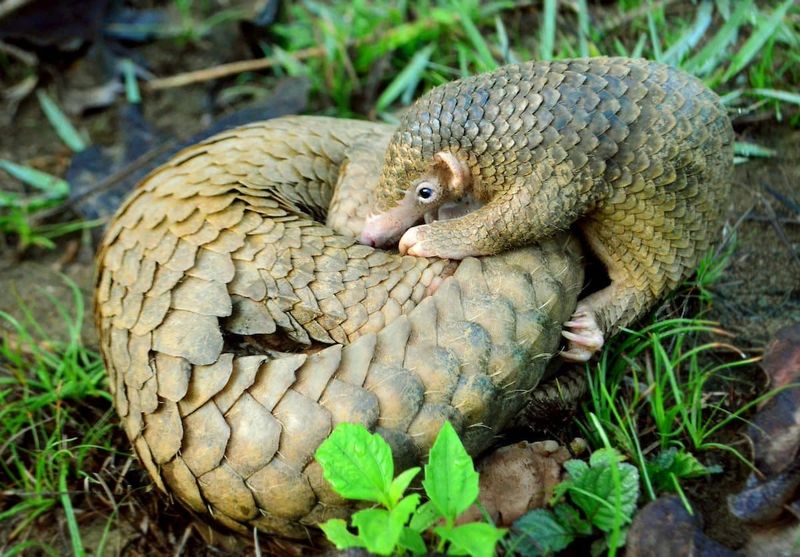
Although solitary, pangolin mothers exhibit remarkable care for their young. After birth, the mother carries her baby on her back, protecting it from harm.
This bond is crucial during the early stages of life, ensuring the young pangolin learns essential survival skills. The mother’s dedication is evident as she shares her burrow and hunting grounds with her offspring. This nurturing behavior strengthens the young pangolin’s chances of survival.
It’s a touching aspect of their life, where the solitary pangolin becomes a devoted caregiver, highlighting the depth of maternal instincts in the wild.
Lack of Teeth
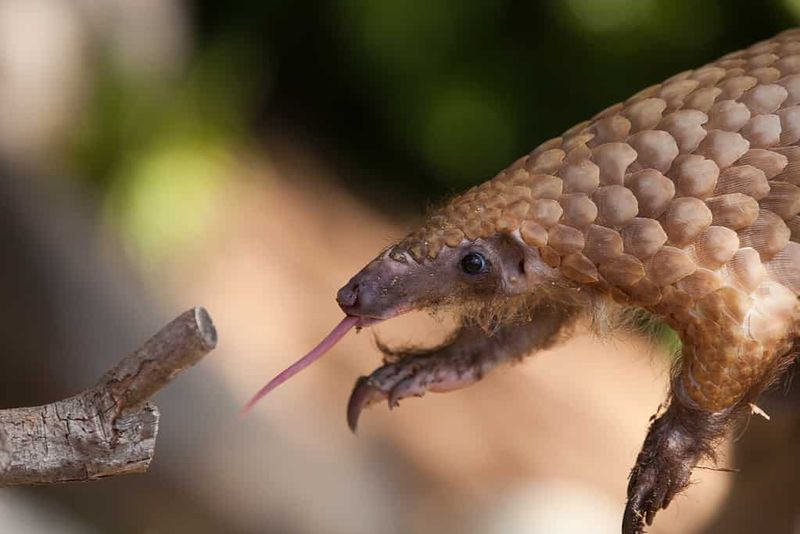
Pangolins are unique in that they lack teeth entirely. Instead, they rely on their powerful stomach muscles and swallowed stones to grind their food.
This unusual adaptation is effective for their insectivorous diet. The absence of teeth may seem like a disadvantage, but it suits their needs perfectly. Without the need for chewing, pangolins can quickly consume vast quantities of ants and termites.
This toothless feature distinguishes them from other mammals and underscores their specialization. It’s a quirky yet efficient system that defines their dietary habits.
Elusive Creatures
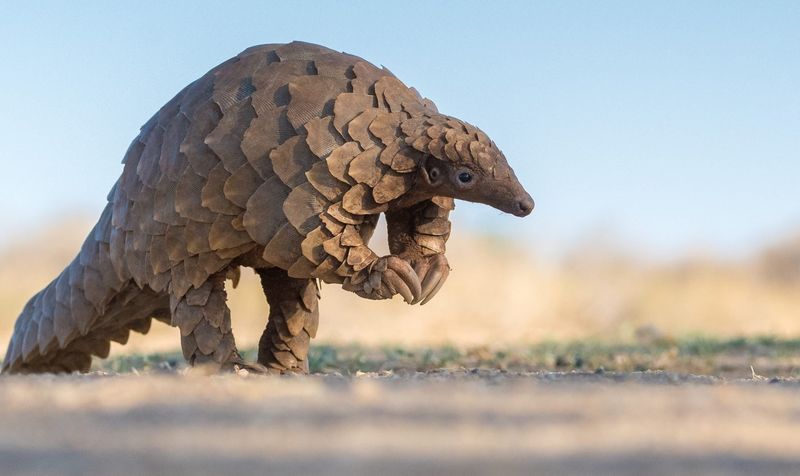
Pangolins are masters of stealth, rarely seen by humans unless actively sought. Their elusive nature is a self-preservation tactic, allowing them to avoid detection by predators and poachers.
This stealthy behavior is complemented by their ability to camouflage within their environment. Their scales blend seamlessly with the forest floor, aiding in their concealment.
Being elusive not only protects them but also adds to their mysterious allure. These secretive creatures remain one of nature’s best-kept secrets, intriguing those lucky enough to catch a glimpse.
Critically Endangered
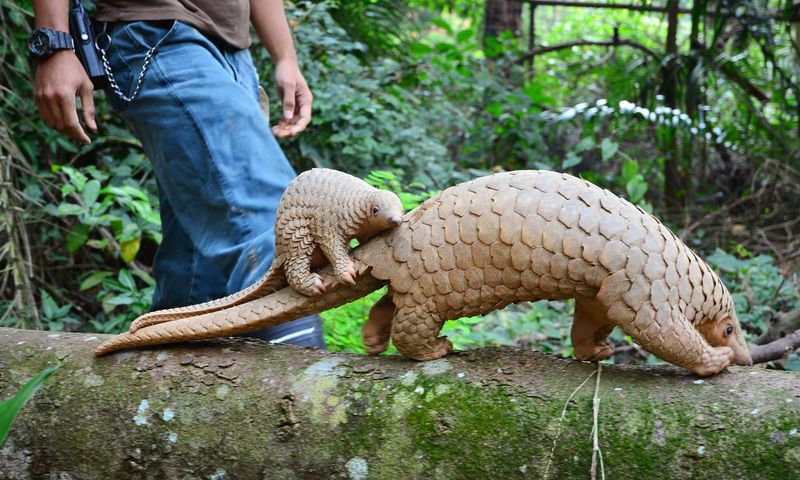
Pangolins face the grim reality of being critically endangered. Their scales, unjustly prized in traditional medicine, have made them the most trafficked mammal in the world.
This illegal trade, combined with habitat destruction, threatens their very existence. Conservation efforts are crucial to their survival. Awareness campaigns aim to educate the public about the importance of pangolins in ecosystems. Protecting these creatures involves international cooperation and stringent law enforcement.
Highlighting their plight underscores the urgent need for conservation, making them a symbol in the fight against wildlife trafficking.

